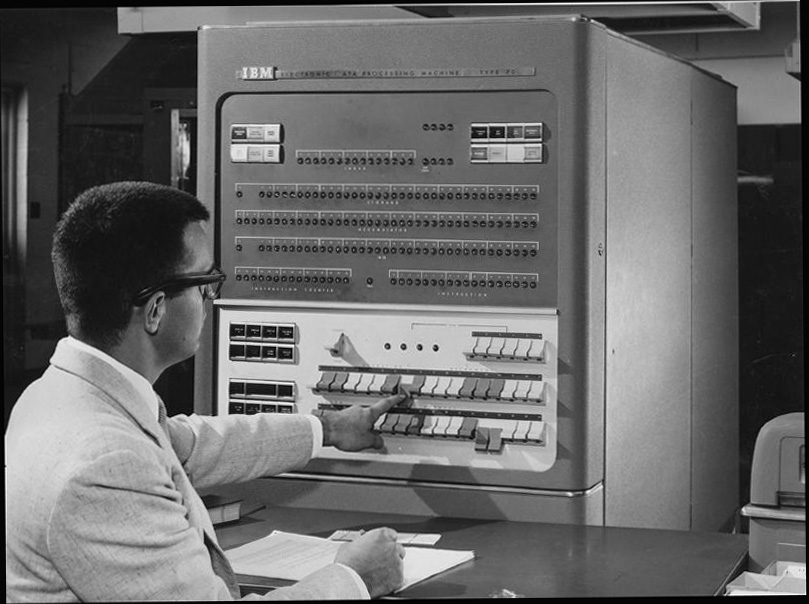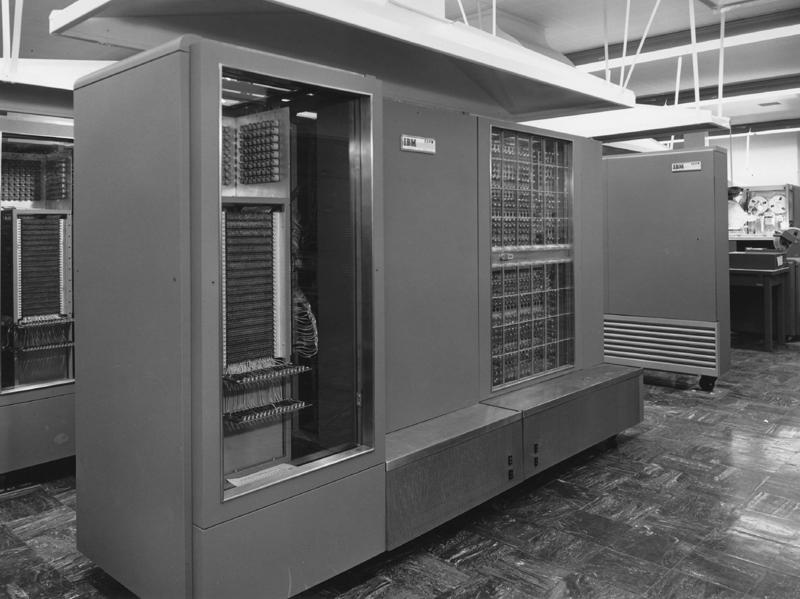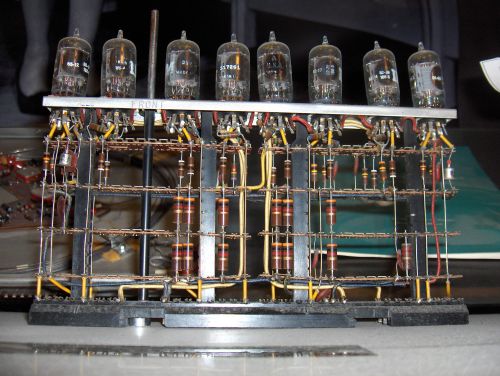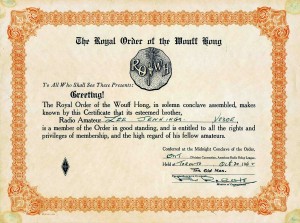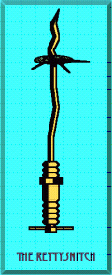DXing tips by the North Jersey DX Association
WFWL (Work First, Worry Later)
Sooner or later, every ham gets bitten by the DX bug. After all, working through the ether to places unknown is the be all and end all of our hobby. And to communicate around the earth, without wires, is why most of us pursue the hobby. We can earn awards just for keeping track of the places we talk to. Islands, counties, grid squares, state capitals, but most of all — COUNTRIES (entities, they’re now called). These are real places on earth. They define our economic and political environment. They’re REAL DX!! Set your goals and go for it!
1- DXCC Entities:
• Get a list of current DXCC entities from the NJDXA web site: www.njdxa.org Put in your Lat/Lon and the list will include beam headings and distances from your QTH.Get a great circle map centred on your QTH for quick reference. You can download software or calculate one online: www.wm7d.net/az_proj/az_html/azproj_form_short.shtml
What’s on the air?
• There are many DX publications out there, including free ones. The ARRL prepares a DX newsletter every week. The Ohio-Penn Bulletin is also free. Another one is at: www.425dxn.org/monthly/
• There are man DX reflectors that you can find on the web with quick searches. Depends on how much mail you want to get. The moderators of these reflectors will enforce the rules, often strictly. No flaming, and no off-topic posts.
2 – Fish where the fish are:
• When are the different bands open and to where?
Below 20 tend to be open at night from sunset to sunrise while frequencies above 20M close during the middle of the night.
• What are you hearing and when?
If you hear the Europeans coming in on 17M at 2PM NZT then remember that it’s 2 AM where THEY are.
Will the same bands be open all night?? Very possibly.
• 15, 12 and 10 get nice openings into North America in the morning. Read your bulletins and see who’s operating from there, then start tuning. You hear OH2 calling CQ and have it confirmed? Take a pass and keep on tuning for other islands like OH0.
• How come bands, like 10, can be absolutely dead all week and suddenly come to life on a contest weekend?? You really think sunspots read the contest schedules? It always amazes me that contests will bring dead bands back from the dead. It turns them into a seething snarling mass of life. Never assume a band is dead. Check your propagation charts and call a few CQs. Wake up the band.
Where should I listen?
• Usually, DXpeditions will announce their operating frequencies ahead of time, but they frequent the bottom of the CW bands, usually within 25kHz of the bottom : 7010, 140105, 21010 etc. They’ll be split and listening up 5 khz or more. Phone is different, but there are common places: 14195, 21295, 28495 with splits of 5 khz or more usually up. 3795 – 3800 on 80M, and no special place on WARC bands. 40M listen for the DX around 7050 to 7070 listening up around 100 kHz 7150 – 7250. Listen first!! The DX station operator will give out specific instructions every few QSOs along with QSL information.
DX Nets
• DX is where you find it! Scattered around the bands are the DX nets, Usually, you won’t pick up anything really rare, but you can check in and listen while you’re doing something else. I think that just tuning around produces better results but sometimes a lone rare DX station doesn’t have a lot of confidence handling huge pileups and will ask the Net control station to help keep order. DX nets are slow and sometimes filled with big ego stations but they are useful from time to time. You can also pick up a few countries on other, non-DX nets, like the IOTA frequency 14260 with a lot less hassle. Many DXers frown on the use of nets, but, as I said DX is where you find it so “go for it”. A hint — sometimes expeditions go on the nets near the end of the trip, and after they have run out of pileups.
3 – PacketCluster
• The internet clusters are fine to see who’s on the air, generally, but by the time you see it, it’s old news. The pileups will most likely be huge if it’s anyone scarce. It may also be posted by someone in Asia or Europe, and you won’t be able to hear the station anyway. While it’s fine to see who’s on, it may not help you. They DO ask that you become ACTIVE, and post “quality” spots to keep the node busy. Local clusters also let you look up prefixes (even the weird ones), set filters, get headings and search databases. They also let you send TALK messages to other individual stations, ANNOUNCE messages to the cluster, and send and receive packet mail. The extent of it is set by the sysop. More than you would ever want to know about PacketCluster can be found at: http://cestro.com/pcluster/
Learn how to be a hunter
• Tune – Tune – Tune
• Be your own ears. Don’t rely on PacketCluster — especially over the Internet. The pileups will be huge for anything the least bit rare. Find it yourself, work it pretty easily, and post it yourself. Then sit back and listen for the jackals trying to pick up the scraps, • Just how many Italian or Spanish stations do you really want to work? Don’t waste your time working common countries over and over and over again when the bands are open! But use the information you have. If you hear lots of the common Europeans, remember that the band is also open to Lichtenstein, Andorra, San Marino, and Monaco, as well as Greece, Mt. Athos, and Northern Africa. Is 10 meters filled with JAs? Tune for China, Mongolia, and Nepal. This will also give you a hint if the band is open to North Korea! On MAJOR contest weekends you will expect huge activity and often won’t see spots outside of the scope of the contest.
4 – I hear ‘em, how do I work ‘em?
• Do what he asks! What is he working? Is he calling for Europe only? 2’s only? Don’t make him angry!
• Split frequency? Make sure you’ve set up properly before you transmit. Why would you tune up on HIS frequency? He isn’t listening there. If you must tune up on the air, then go to a clear spot just past the pileup. Be patient and switch VFOs to see how he’s working the pileup. Is he hanging around a spot for a few Q’s? Is he tuning upwards? Downwards? Random? Plan your strategy around his operating techniques.
• You hear someone you want to work, but it isn’t his frequency. Move up the band and call him on a clear frequency. I think people tend to tune more slowly and carefully in an UPWARD direction, and then speed down to the bottom of the band to begin again. This works for catching not-so-rare countries, or for nabbing a ragchew with a station you want to chat with. In this case, he’ll be answering YOUR call, so you can set the rules of the QSO.
• Check the DX resources on the internet to see how long the expedition is going to last. It’s always a lot easier to work an expedition near the end of the published schedule, because all the big guns have worked ‘em earlier. WARC bands seem easier than 20 and 15, but you have to plan better. CW will always be easier than phone, because there are fewer operators AND the DX may be better ops as well. The danger of waiting is that the group may leave ahead of schedule, locking you out by missing the last day of operation.
• A directional antenna is always best. Turn it to the area you want to work. In the early morning, check the signal long path. Swing the beam past the station’s location and back again to get the strongest signal — it may not be where you expect it to be.
• Watch PacketCluster (especially 2M local nodes) to get a better idea of band openings. Also, lots of comments will warn you of pirate operations, qsl routes and split frequencies.
What the heck’s that weird prefix??? Special event stations and contest stations will often sport obscure prefixes.
• PacketCluster command sh/p will show the country, BUT command sh/h will show the country AND the beam heading AND distance http://dx.qsl.net/logs/ is an excellent online prefix finder.
Contest Weekends – To Work or Not to Work?
• Contesters want your contact — not your card.
• Try the WARC bands to snag the non-contesters. Contesters are deluged with QSL requests and may be especially slow to QSL or may not QSL at all.
• BUT – some rare expeditions like to go during contest weekends, so don’t be reluctant to work ‘em. You can work lots of contest stations, and save the contacts for backup QSLs, if needed later.
Signal reports
• Give any report you want. Just expect a 59 or 599 in return. Think about it – if you were working thousands of stations, would YOU want to make all those extra entries in a log??
5 – Online Logs
• Most rare expeditions today post their logs on the web. If you’re in the log, you don’t have to rework the group on the same band/mode. You are guaranteed a card if you show up there. http://dx.qsl.net/logs/ is the best starting point. The DC rags will have specific information for new expeditions.
QSL
• First, always check sources to see if the DX station has a MANAGER! start your research at: http://www.qsl.net/ad5xa/callbook.html
• Send a card direct to the station or the manager (whichever is correct) for the first time you work a new entity. Get the card in the box.
• Overseas? Enclose 2 GS (GS = $2 USD) or 2 IRC (even though one should be enough) and an oversized envelope, addressed. You can also affix air mail postage that you can buy from 3rd parties, but I think 2GS works best. Some countries don’t accept IRCs. US currency may be illegal to own in others. Foreign postage may be best for hostile or some third-world countries — include a little extra. You can get these from stamp companies. No NZ stamps. They’re only good here in New Zealand
• Some expeditions will give a foreign manager, but will have arranged to send the cards from another country. Don’t be upset if you sent your card to a German manager and it comes to you with a U.S. stamp. It’s one way to help defray the costs of an expensive expedition where boat charters and other unimaginable expenses must be met. So for DXpeditions to rare places, where there is a Western (European) manager, or a Japanese (JA) manager, a couple of bucks is appropriate, and appreciated. Sitting in your shack, you have no idea of what DX-peditioners must go through to give you that “new one”, and to boot, they don’t even get credit for working it! The team that went, at huge personal expense, to Peter I Island, all still need to work it. • DO NOT put call signs on the envelopes!
• Postal thieves know how to look for these letters. Send your card out in a plain, No. 10 envelope, typed recipient’s address and return address. A business envelope with a business return address is even better. Keep the bulk down to a minimum and flatten the whole thing before you seal the envelope. When you send a self-addressed envelope, be sure to put a piece of waxed paper under the gum on the envelope flap. Otherwise it may stick itself closed by the time it gets there!
• US manager? A SASE should be enough, but if the contact is for a place that required a special, and often very expensive, expedition, add a couple of GS, too. You really want these guys to go somewhere else down the line. You can even make up a fake return address that looks like a business and print it on your envelopes. Just don’t make the letter look like it’s from one ham to another.
• Doesn’t respond but really needed? Re-QSL. If all else fails, make up a card with HIS callsign, QSO details, and a note that he should please check his log, and if correct, sign it and mail it back to you in the envelope that you provide. Still enclose the payment. Another clever idea is to look up his email address on www.QRZ.com and send him a pleasant inquiry type email. I spent two years tracking down an elusive 5V7 and finally got the card after opening up a dialog with him by email.
• Deadbeats? Quite rare actually. There are a lot of very nice guys in the DX world. But, with few exceptions, there will usually be another operator from the same place. But if it’s from a really rare operation you may even have to send snail mail letters to get a response. QSLs do go missing in the mail. There are some rogue post office workers around the world that give DXers a bad name.
• Your card really isn’t needed or wanted by most DX stations (unless you yourself are operating from a scarce county or island, in which case YOU are the one who will be inundated with requests.) You don’t need a fancy card or any card at all! You can design a “card” and print it out from your computer log, if you like. Just be sure to include all the details AND sign or initial it. This works well for expeditions where you have worked the same call sign on several bands and modes. You can list them on the same page.
• Surprise! You’ll get cards via the bureau from scarce expeditions, even if you didn’t QSL them! Lots of operations run off all the labels at once. Labels not claimed directly will often be put on cards and sent via the bureau after a year or so. But don’t count on it. • Don’t forget to send a donation from time to time to your local NZART incoming bureau for your cards. Our local bureaus are run by volunteers and postage is increasingly more expensive as time goes on. A donation will make a big difference in coping with the costs of outgoing envelopes and processing charges.


